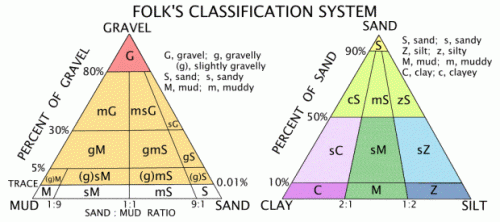-
Posts
17 -
Joined
-
Last visited
About Nucleus
- Birthday 04/12/1995
Profile Information
-
Location
Philippines
-
Interests
All fields of science
-
College Major/Degree
Bs-Biology
-
Favorite Area of Science
Biology
Nucleus's Achievements

Quark (2/13)
2
Reputation
-

Folk Classification System of Sediments?
Nucleus replied to Nucleus's topic in Ecology and the Environment
sorry for late replies I am a bs-biology student a 3rd yr bs-biology student i am currently taking summer class thats why Im busy and sometimes i cant visit this forum and reply . I dont need to translate replies because i can understand english thank you site you post it gives me an idea about the classification of sediments but i think i cant use it as a reference since it not a published work but it helps. -
Seagrasses are flowering plants that live in submerged shallow marine and estuarine environments. They possess leaves, stems and roots. Leaves of seagrass have cuticle for gas and nutrient exchange. Leaves have aerenchyma for water and nutrient transport throughout the plant. Aerenchyma consists of lacunae that provide buoyancy and allow gas exchange to the plant. Their leaves also have chloroplasts which is essential for photosynthesis, to convert carbon dioxide and water to oxygen and sugar (McKenzie, 2008). In this manner, it converts light energy to chemical energy which can be used by the plant or other organisms that feed on the plant. Seagrass stems and roots are attached to the substrate. They anchor the plant, store food and absorb nutrients for the plant. Roots and rhizomes also have aerenchyma and lacunae for oxygen transport (McKenzie, 2008). Seagrasses are adapted to marine existence by having high salt tolerance, ability to grow when fully submerged, well-developed rhizomes, hydrophilic pollination, and sufficient competitive power in the marine environment (den Hartog, 1967). Seagrasses form seagrass meadows if the environmental conditions for a given species is met, which makes the seagrasses abundant in the marine coastal environment (Larkum et,al, 2006).They can be found on all of the world’s continents except Antarctica. They cover around 0.1-0.2 percent of the global ocean (Di Carlo and McKenzie, 2011). Seagrass meadows are one of the critical components (along with coral reefs, mangrove forests, and algae beds) of tropical coastal marine environments (Waycott et al., 2009). They provide habitat for diverse groups of other marine organisms, including more than 360 species of fish, and are an important source of food for numerous charismatic animals including turtles, dugongs and seahorses. Sea grasses also play an important role in fisheries production as well as sediment stabilization and protection from coastal erosion, making them one of the most important coastal marine ecosystems for humans (Di Carlo and McKenzie, 2011). Aside from that, sea grasses are considered coastal canaries because they are being monitored to detect human influences on coastal ecosystems (Orth et al., 2006), since they are sensitive to environmental changes and can be monitored to detect human influences to coastal ecosystems through measurable changes in seagrass abundance, distribution and condition provide resource managers with advance signs of deteriorating ecological conditions caused by poor water quality (McKenzieet al., 2012). The intertidal area of Loay, Bohol grows a wide cover of seagrass in some areas especially on areas where mangroves are present but some has minimal seagrass cover because some of the barangays are being developed as beach spots. Intertidal areas of Loay also have different substrate types and have mangrove are which may affect species composition, relative abundance and percent cover of seagrass. Salinity may also be a factor because there is a river that supplies freshwater to some coastal barangays which may bear an effect on their salinity.Seagrasses are flowering plants that live in submerged shallow marine and estuarine environments. They possess leaves, stems and roots. Leaves of seagrass have cuticle for gas and nutrient exchange. Leaves have aerenchyma for water and nutrient transport throughout the plant. Aerenchyma consists of lacunae that provide buoyancy and allow gas exchange to the plant. Their leaves also have chloroplasts which is essential for photosynthesis, to convert carbon dioxide and water to oxygen and sugar (McKenzie, 2008). In this manner, it converts light energy to chemical energy which can be used by the plant or other organisms that feed on the plant. Seagrass stems and roots are attached to the substrate. They anchor the plant, store food and absorb nutrients for the plant. Roots and rhizomes also have aerenchyma and lacunae for oxygen transport (McKenzie, 2008). Seagrasses are adapted to marine existence by having high salt tolerance, ability to grow when fully submerged, well-developed rhizomes, hydrophilic pollination, and sufficient competitive power in the marine environment (den Hartog, 1967). Seagrasses form seagrass meadows if the environmental conditions for a given species is met, which makes the seagrasses abundant in the marine coastal environment (Larkum et,al, 2006).They can be found on all of the world’s continents except Antarctica. They cover around 0.1-0.2 percent of the global ocean (Di Carlo and McKenzie, 2011). Seagrass meadows are one of the critical components (along with coral reefs, mangrove forests, and algae beds) of tropical coastal marine environments (Waycott et al., 2009). They provide habitat for diverse groups of other marine organisms, including more than 360 species of fish, and are an important source of food for numerous charismatic animals including turtles, dugongs and seahorses. Sea grasses also play an important role in fisheries production as well as sediment stabilization and protection from coastal erosion, making them one of the most important coastal marine ecosystems for humans (Di Carlo and McKenzie, 2011). Aside from that, sea grasses are considered coastal canaries because they are being monitored to detect human influences on coastal ecosystems (Orth et al., 2006), since they are sensitive to environmental changes and can be monitored to detect human influences to coastal ecosystems through measurable changes in seagrass abundance, distribution and condition provide resource managers with advance signs of deteriorating ecological conditions caused by poor water quality (McKenzieet al., 2012). The intertidal area of Loay, Bohol grows a wide cover of seagrass in some areas especially on areas where mangroves are present but some has minimal seagrass cover because some of the barangays are being developed as beach spots. Intertidal areas of Loay also have different substrate types and have mangrove are which may affect species composition, relative abundance and percent cover of seagrass. Salinity may also be a factor because there is a river that supplies freshwater to some coastal barangays which may bear an effect on their salinity. I need suggestions for improving this and anyone is welcome in adding statements just add also references.
-

Folk Classification System of Sediments?
Nucleus replied to Nucleus's topic in Ecology and the Environment
How to measure? we will be using the folk classification to classify sediments and we are having a problem in understanding it since its complicated especially getting the percentage of the sediments inorder for us to classify the sediments -
Tnx for all the reply It helps.
-

Folk Classification System of Sediments?
Nucleus replied to Nucleus's topic in Ecology and the Environment
is there a formula in getting the percentage? -
Can someone explain this one im having a hard time with this. How to get the percentage?and also the ratio below what does it mean?
-
For me Its okay we did that on our class but you must wear proper lab gowns, mask and gloves to prevent you from harm from the bacteria.
-

I need a suggestion for an essay about family in insect kingdom
Nucleus replied to Shalshelan's topic in Homework Help
You must look for an insect with special adaptation or with special modification in their body and make it as essay. -
percentage cover of sea grass
-
Sorry Its Percentage cover sir. Its percentage cover by the way
-
If we are comparing percentage what statistical tool are we going to use?
-
maybe but i don't know , that is part of my question
-
ok that helps a lot. ahm lets go to the importance of it to the people. In determining the species composition and relative abundance of it what will be its effect to the people living in the said area?can they be benefited?if yes in what ways?
-
what is the importance of determining the species composition and relative abundance of an organism?and also why do we need to determine the percentage cover of that organism? Answer pls.


